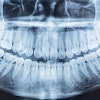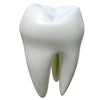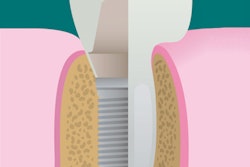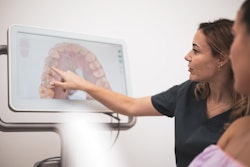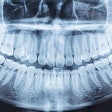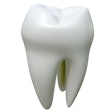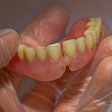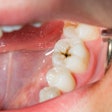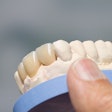A London-based endodontist may have solved a 500-year-old mathematics puzzle hidden within one of the most iconic drawings, the Vitruvian Man, and his findings may have significant implications for dentistry.
Rory McSweeney, a practicing endodontist, may have validated that human proportions are not random but in fact reflect mathematical relationships, according to a recently published study in the Journal of Mathematics and the Arts.
“Rather than viewing dental anatomy as arbitrary biological form, we might approach it as an expression of universal mathematical principles of optimal spatial efficiency—principles that Leonardo intuited centuries before modern science could validate them,” McSweeney wrote (J of Mathematics and the Arts, June 26, 2025).
The Vitruvian Man is a pen and ink drawing by da Vinci of a nude “perfect” man with his arms and legs together and extended enclosed within a superimposed square and circle. The inspiration for the drawing came from Marcus Vitruvius Pollio, a Roman architect who claimed that the human body corresponds with mathematical principles and therefore reflects harmonious proportions.
 The Vitruvian Man sketch from Leonardo da Vinci.Image courtesy of McSweeney. Licensed under CC BY 4.0.
The Vitruvian Man sketch from Leonardo da Vinci.Image courtesy of McSweeney. Licensed under CC BY 4.0.
Da Vinci claimed that he solved the riddle, referred to as the Vitruvian Enigma -- the precise relationship or geometric code between the circle and the square -- but neither he nor Pollio explained how they did so, which has left many scratching their heads.
The artist and mathematician offered a clue, writes McSweeney, when he referred to an “equilateral triangle” extending from the man’s navel to his legs. This triangle corresponds with the Bonwill triangle in dental anatomy, which is formed from the two mandibular condyles to the central incisors, McSweeney wrote.
 Figure 2: Bonwill's triangle in mandibular anatomy. Bonwill's equilateral triangle in mandibular anatomy, demonstrating the foundational geometric relationship governing optimal human jaw function established in 1864. This triangle connects the two mandibular condyles (jaw joints) to the midpoint of the lower central incisors and corresponds precisely to Leonardo's explicit reference to "an equilateral triangle" in his Vitruvian Man construction.Image and caption courtesy of McSweeney. Licensed under CC BY 4.0.
Figure 2: Bonwill's triangle in mandibular anatomy. Bonwill's equilateral triangle in mandibular anatomy, demonstrating the foundational geometric relationship governing optimal human jaw function established in 1864. This triangle connects the two mandibular condyles (jaw joints) to the midpoint of the lower central incisors and corresponds precisely to Leonardo's explicit reference to "an equilateral triangle" in his Vitruvian Man construction.Image and caption courtesy of McSweeney. Licensed under CC BY 4.0.
Da Vinci’s rendering has a measured ratio of 1.64 to 1.65 between the square’s sides and the circle’s radius, which matches the tetrahedral ratio of 1.633 that is found in optimal spatial arrangements, McSweeney wrote. This same ratio matches optimal human craniofacial proportions (cranial architecture: 1.64 ± 0.04), which suggests a merging of mathematical relationships across biological systems.
McSweeney’s analysis may not have only validated da Vinci as “both anatomical investigator and geometric philosopher … revealing sophisticated mathematical thinking underlying Renaissance artistic achievement,” but the finding holds promise for modern dentistry.
“This mathematical validation opens new possibilities for dental science,” he wrote. “If human craniofacial systems have indeed evolved according to the same geometric principles that govern optimal spatial organization throughout nature, our understanding of dental function, treatment planning, and prosthetic design could be fundamentally transformed.”


